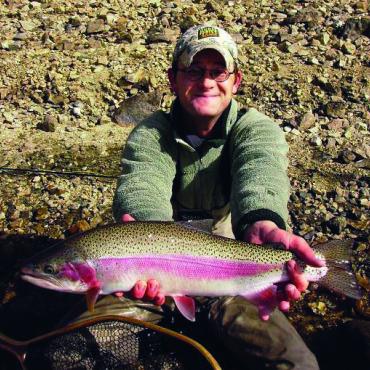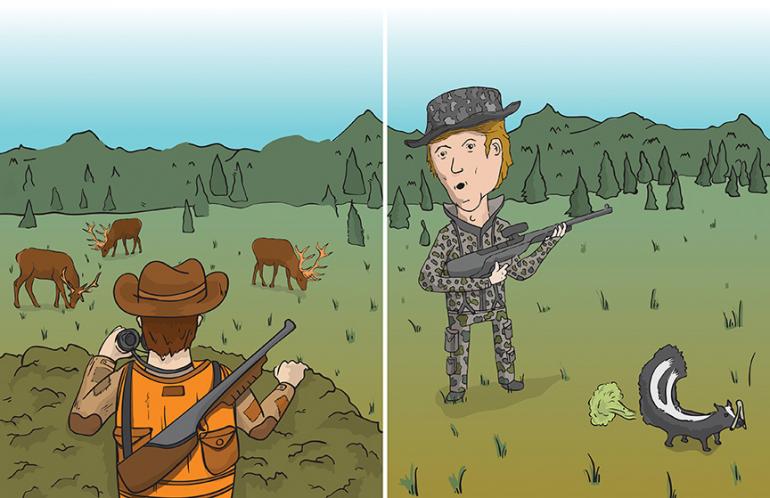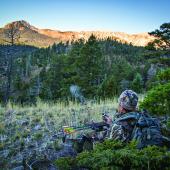Fashion vs. Function
Exposing camophiles.
Hunting is one of the most basic and elemental activities that we engage in as humans, so why is it that we’re continually trying to complicate things? Take, for example, hunting clothing—specifically camouflage and “scent-free” or “scent-proof” clothing. Less than a century ago, such products would have been scoffed at and down right “pooh-poohed” as a gimmick. Now, I admit fully shame-faced and down-headed that I’ve caught myself ogling and fondling the latest patterns in high-tech fabrics when strolling through the sporting-goods store. The rational side of me knows that spending money on a “marsh-weed, sagebrush, pinecone, digitally transmogrified” rain shell is absurd, but it just looks so cool.
Reality check: elk, deer, antelope, and any other species of game don’t give a tinker’s damn how cool you think you look. And Montana law states that 400 square inches of blaze orange must be worn above the waist, at least during rifle season, which makes camouflage clothing sort of a moot point. When it comes to the scent-free gear, save your money for gas and ammo. A recent Outdoor Life study proved that a cadaver dog could find a person entirely clad in “scent-free” clothing in less than five minutes, and this included the application of scent dispersing over-sprays.
Here’s how you should actually dress for success this season.
The Low-Down
Go low-tech. Never underestimate the effectiveness of fading. All wild animals live in a world constantly under the bombardment of UV light—your hunting clothing should be, too. Hang any outerwear in the sun for as long as possible, including that orange vest. Sharp contrast looks great in photos, but dull and bland are much more effective for concealment.
Don’t Ditch the Solids
Consider your quarry: on every wild animal from ducks to deer, nature has genetically provided the perfect camouflage. Usually this consists of variations of the same color; perhaps those work-worn Carhartts are perfect for early-season antelope. Likewise, with those old grey wool pants gathering dust in the attic, chances are that they have the same invisible qualities in deep timber as a moose flank.
Mix ‘n’ Match
The basic principle of camouflage is the breaking up of an outline that would be out of place in nature. Therefore, wearing the same pattern from head to toe is not only contrary to nature, but it makes you stick out like a low-rider at a monster-truck rally. Match your upper half with the foliage and terrain of your hunting area; likewise with your bottom half. Keep in mind that shadows tend to be more pronounced closer to the ground, therefore darker tones are more appropriate from the knees down. Take advantage of natural cover, and remember that color and tone are more important than pattern.
Sink the Stink
After a good washing in a quality detergent, with a dash of baking soda, and a long air dry, preferably outdoors, all hunting clothing, including undies, should be stored in a bin or airtight bag. It helps to throw in a few fresh sprigs of sage, pine bows, or other local vegetation into the container as well. This process is not only cheaper than sprays or supposed “scent-proof” clothing. Those few leaves, sage sprigs, or even a handful of dirt will actually impart the odors of your hunting area into your clothing. Don’t forget diet. If you tend to graze on the Town Pump hot-case, a good sweat pre-hunt might be in order. A soak in a sauna or steam room will help flush the odors from your system, and force you to hydrate. Pre-hunt, dose underarms, groin area, and feet with a mixture of Goldbond powder and baking soda. Not only will this prevent chafe, it will also disperse moisture and neutralize human odor.
Fashion vs. Function
Unless one can justify the purchase of that $350 jacket or pants, minimize your gear expenditures. If a coat is great for hunting, it should also be great for fishing. While the latest camo pattern might seem totally necessary for that special tag you drew, there is probably something in the gear bag or closet that will fit the bill perfectly, and the leftover money will come in handy for future tags, ammo, or travel expenses. Modern hunting gear is very nice, and while it is designed to perform in a variety of conditions, its primary purpose is to separate hunters from their hard-earned cash.
Every season, I don the same faded old orange vest. This simple vest was a gift from my brother, presented just prior to my first season as a hunting guide. It is blood-stained, tattered in places, and the zippers on most of the pockets have jammed or ceased to function. Yet whether as a guide, or hunting for my own freezer, that vest and every stain, crease, and threadbare spot somehow seem to help in concealment. Your gear, whether new or handed down, should do the same. Keep it simple and happy hunting.












